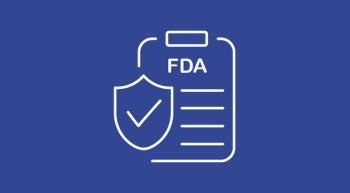
Ribociclib Combo Produces Similar pCR to Chemo in HR+ Breast Cancer
Neoadjuvant ribociclib plus endocrine therapy showed pCR rates comparable to chemo in HR-positive, HER2-negative early breast cancer.
Ribociclib (Kisqali) combined with endocrine therapy produced low but comparable pathologic complete response (pCR) rates to standard chemotherapy in patients with intermediate-risk, hormone receptor (HR)–positive, HER2-negative early breast cancer, according to data from the neoadjuvant cohort of the phase 3 WSG ADAPTcycle trial (NCT04055493).1
Data presented at the 2025 ESMO Breast Congress showed that at a median treatment duration of 5.7 months (range, 0.7-10.5), 5.7% of patients who received ribociclib plus endocrine therapy (n = 316) achieved a pCR vs 7.1% of those who received SOC chemotherapy (n = 184; odds ratio [OR], 0.79; 95% CI, 0.38-1.66; P = .542). The combined rates of pCR/near-pCR in these respective arms were 9.5% and 15.4% (OR, 0.58; 95% CI, 0.33-1.00; P = .05). Notably, 90.8% of patients in the SOC arm had received anthracycline-containing regimens.
“We feel that the neoadjuvant results in this small group—about one-third of the overall randomized pool—confirm the trial’s assumptions that chemotherapy benefit may be limited in intermediate- to high-risk HR-positive, HER2-negative early breast cancer stratified by nodal status (tumor burden), recurrence score, and endocrine therapy response in an algorithm that we developed in the [WSG-]ADAPT study [NCT01779206],” Nadia Harbeck, MD, PhD, stated in the presentation. “There is limited chemotherapy benefit in patients where we normally would give chemotherapy because we feel endocrine therapy is not sufficient, so I think there is room for replacing chemotherapy with endocrine-based therapy.”
Harbeck is director of the Breast Center, chair for Conservative Oncology and head of the Oncological Therapy & Clinical Trials Unit in the Department of OB&GYN, and head of the Center for Hereditary Breast and Ovarian Cancer at Ludwig-Maximilian University Hospital in Munich, Germany.
The Evolution of ADAPTcycle
Harbeck noted that the optimal population of patients with HR-positive, HER2-negative early breast cancer in whom chemotherapy can be omitted has yet to be determined, particularly for premenopausal patients with 1 to 3 involved lymph nodes or those with at least 4 involved lymph nodes and endocrine-sensitive disease. However, gene expression assays have shown that chemotherapy can be safely omitted in postmenopausal patients with 0 to 3 involved lymph nodes, as well as in N0 premenopausal patients, who have low-risk gene expression assay results.
Previously, the WSG-ADAPT trial showed that assessments evaluating responses to a short course of neoadjuvant endocrine therapy via Ki-67 score added to the information obtained through gene expression assays. In the trial, patients with 0 to 3 involved lymph nodes, a recurrence score of 25 or lower, and endocrine therapy response achieved a 5-year distant disease-free survival (dDFS) rate of 97%, regardless of menopausal status.2
Furthermore, the addition of a CDK4/6 inhibitor to endocrine therapy has been shown to prolong progression-free survival and overall survival (OS) in patients with HR-positive, HER2-negative metastatic breast cancer.1 Moreover, the WSG-ADAPT trial showed that endocrine-sensitive tumors derived minimal benefit from chemotherapy regardless of tumor burden or biology.2 In patients with a recurrence score greater than 25 who responded to endocrine therapy, the pCR rate was 5.6%; this rate was 21.2% in those with a recurrence score over 25 who did not respond to endocrine therapy.
ADAPTcycle investigated whether a CDK4/6 inhibitor plus endocrine therapy could replace chemotherapy in patients with intermediate- to high-risk HR-positive, HER2-negative early breast cancer stratified by nodal burden, recurrence score, and endocrine therapy response.1
A Trial Design Based on Disease Risk Factors
ADAPTcycle enrolled patients with luminal B–like early breast cancer. Patients needed to have c/pN0 to N1 disease with additional risk factors, or high-risk disease, defined as grade 3 disease and/or a pre-endocrine therapy Ki-67 score of at least 20% and/or c/pN2 to c/pN3 disease and/or c/pT2 to c/pT4c disease.
“[Regarding the] population of [patients with] high nodal burden and high recurrence score, we strongly felt that these patients need chemotherapy no matter what, and we didn’t allow them into the trial,” Harbeck noted.
A total of 5274 patients were screened. During the screening phase, patients underwent diagnostic biopsy to determine pre-endocrine therapy Ki-67 score, received investigator’s choice of induction endocrine therapy for at least 14 days, then underwent biopsy in the neoadjuvant setting or surgery in the adjuvant setting to determine endocrine therapy response per Ki-67 score. Patients with ADAPT intermediate-risk disease were enrolled in the trial. ADAPT intermediate-risk disease was defined as that with a recurrence score of 25 or lower and a post-endocrine therapy Ki-67 score higher than 10%; a recurrence score greater than 25 and a post-endocrine therapy Ki-67 score of 10% or lower in patients with c/pN0 to c/pN1 disease; or a recurrence score of 25 or lower and a post-endocrine therapy Ki-67 score of 10% or lower in patients with c/pN2 to c/pN3 disease.
Overall, 1684 patients were randomly assigned 3:2 to receive ribociclib at 600 mg per day for a total of 2 years plus an aromatase inhibitor (AI; and a GnRH agonist in premenopausal patients) followed by endocrine therapy at investigator’s choice at end of treatment (EOT); or SOC chemotherapy for 16 to 24 weeks followed by endocrine therapy at investigator’s choice at EOT. The decision to start study treatment in the neoadjuvant or adjuvant setting was determined by the investigators and the patients. The recommended neoadjuvant treatment duration was 6 months. Patients were stratified by menopausal status, c/pN status, recurrence score, and endocrine therapy response.
The coprimary end points were invasive disease-free survival in both trial arms and dDFS in the ribociclib arm. Notably, primary end point analyses are planned to be performed when all patients have received endocrine therapy for 5 years, which is expected to be at the end of 2028. Secondary end points included OS, quality of life, treatment adherence, pCR rate in patients receiving neoadjuvant therapy, clinical response rate, and breast-conservation therapy rate.
Patient Characteristics and Treatment Statuses
At data cutoff, among 1012 patients assigned to the ribociclib arm, 341 were assigned to receive neoadjuvant treatment, 332 started treatment, 137 completed treatment by protocol, and 52 were still on treatment. Among 672 patients assigned to the SOC arm, 213 were assigned to receive neoadjuvant treatment, 188 started treatment, and 153 completed treatment by protocol.
Harbeck explained that baseline characteristics in the neoadjuvant cohort of this study (n = 554) were generally well balanced between the 2 arms, and that overall, patients in this study had high-risk disease. In the overall neoadjuvant population, patients had a median age of 54 years (range, 22-83). Almost half (48.6%) of patients were pre/perimenopausal, which Harbeck noted was a slightly higher proportion than is seen in real-world populations. Most patients had cT2 to cT4 disease (66.7%), cN0 to cN1 disease (93.5%), and grade 3 disease (50.6%). The median recurrence score was 25 (range, 0.62), the median Ki-67 score at baseline was 25 (range, 1-70), and the median Ki-67 score after endocrine therapy was 10 (range, 1-60).
Subgroup-Stratified pCR Outcomes
Investigators conducted an exploratory analysis of clinical response rates in a subset of patients. The rate of clinical response, which was defined as complete or partial response at the time of surgery, was 78.0% in the ribociclib arm (n = 100) vs 93.3% in the SOC arm (n = 75; OR, 0.25; 95% CI, 0.09-0.70; P = .009). Additionally, the rates of stable disease in these respective arms were 20% and 6.7%, and 2 patients had progressive disease in the ribociclib arm.
Among patients with cN0 to cN1 disease, the pCR rates were 6.1% in the ribociclib arm (n = 297) vs 7.4% in the SOC arm (n = 176; OR, 0.81; 95% CI, 0.39-1.69; P = .574). Notably, neither pCR nor near-pCR was observed in patients with cN2 to cN3 disease.
Among patients with a recurrence score of 0 to 25, the pCR rates were 3.3% and 5.2% in the ribociclib (n = 153) and SOC (n = 97) arms, respectively (OR, 0.62; 95% CI, 0.18-2.21; P = .462). Among those with a recurrence score of higher than 25, the pCR rates in these respective arms were 8.0% (n = 150) and 7.6% (n = 79; OR, 1.06; 95% CI, 0.38-2.94; P = .914).
When patients were stratified by treatment duration, among patients who had been treated for less than 6 months, the pCR rates were 5.7% in the ribociclib arm (n = 193) vs 7.1% in the SOC arm (n = 127; OR, 0.79; 95% CI, 0.32-1.97; P = .617); the median treatment durations in these respective arms were 4.9 months (range, 0.7-6.0) and 5.4 months (range, 1.6-6.0). Among patients who had been treated for 6 to 12 months, the pCR rates were 5.0% in the ribociclib arm (n = 121) vs 7.7% in the SOC arm (n = 52; OR, 0.63; 95% CI, 0.17-2.32; P = .483); the median treatment durations in these respective arms were 6.8 months (range, 6.0-11.4) and 6.6 months (range, 6.0-10.5).
pCR rates were also evaluated in endocrine therapy responders. Notably, endocrine therapy response was defined as a post-endocrine therapy Ki-67 score of 10% or lower. Among premenopausal patients who were 50 years of age or younger, the endocrine therapy response rates were 26.4% with tamoxifen (n = 106), 47.2% with tamoxifen plus ovarian function suppression (OFS; n = 36), and 83.3% with AI plus OFS (n = 78). Among patients who were older than 50 years of age and/or postmenopausal, the endocrine therapy response rates were 6.3% with tamoxifen (n = 32), 81.1% with an AI (n = 264), and 84.2% with endocrine therapy plus OFS (n = 19; premenopausal patients only).
Among all endocrine therapy responders, the pCR rates were 6.1% in the ribociclib arm (n = 196) vs 7.5% in the SOC arm (n = 107; OR, 0.81; 95% CI, 0.32-2.04; P = .651). Among all endocrine therapy nonresponders, these respective rates were 3.8% (n = 105) and 6.8% (n = 74; OR, 0.55; 95% CI, 0.14-2.11; P = .38).
A univariable analysis for pCR showed that node-negative disease and grade 3 tumors were associated with pCR compared with node-positive disease and grade 1 to 2 tumors. Furthermore, a multivariable analysis showed that nodal status was independently associated with pCR.
Safety Findings and a Forward Glance
The most common grade 3 or higher adverse effects (AEs) observed in the ribociclib (n = 328) and SOC (n = 188) arms were neutropenia (29.8%; 14.4%), liver toxicity (18.9%; 3.2%), leukopenia (2.1%; 3.2%), rash (2.1%; 1.1%), infection (0.0%; 2.7%), and fatigue (0.3%; 3.7%). Any-grade alopecia was also common, occurring in 19.8% and 56.4% of patients in these respective arms. Additionally, 40 and 20 grade 3 or higher therapy-related serious AEs were reported in these respective arms.
In total, 13.7% of patients in the ribociclib arm had ribociclib dose reductions. Moreover, 19.2% and 11.7% of patients in the ribociclib and SOC arms, respectively, discontinued the study treatment. Notably, 8.5% of patients crossed over from the ribociclib arm to the SOC arm. During the neoadjuvant portion of the trial, 2 patients in the ribociclib arm died due to coronary disease and myocardial infarction; and 3 patients in the SOC arm died due to bowel perforation, pneumonitis, and stroke.
“Since we don’t know what the pCR rates actually mean for outcome in luminal B–like breast cancer, we have to await the outcome results expected for 2028 in approximately 1700 patients in order to finally decide how we’re going to inform our patients on whether they can replace chemotherapy with a CDK4/6 inhibitor,” Harbeck concluded.
References
- Harbeck N, Gluz O, Christgen M, et al. Ribociclib + endocrine treatment vs SoC chemotherapy in intermediate risk HR+/HER2- early breast cancer: results from the neoadjuvant cohort of the phase-III WSG ADAPTcycle – trial. Presented at: 2025 ESMO Breast Congress; May 14-17, 2025; Munich, Germany. Abstract 189O.
- Gluz O, Kuemmel S, Nitz U, et al. Nab-paclitaxel weekly versus dose-dense solvent-based paclitaxel followed by dose-dense epirubicin plus cyclophosphamide in high-risk HR+/HER2- early breast cancer: results from the neoadjuvant part of the WSG-ADAPT-HR+/HER2- trial. Ann Oncol. 2023;34(6):531-542. doi:10.1016/j.annonc.2023.04.002
Newsletter
Knowledge is power. Don’t miss the most recent breakthroughs in cancer care.

















































































